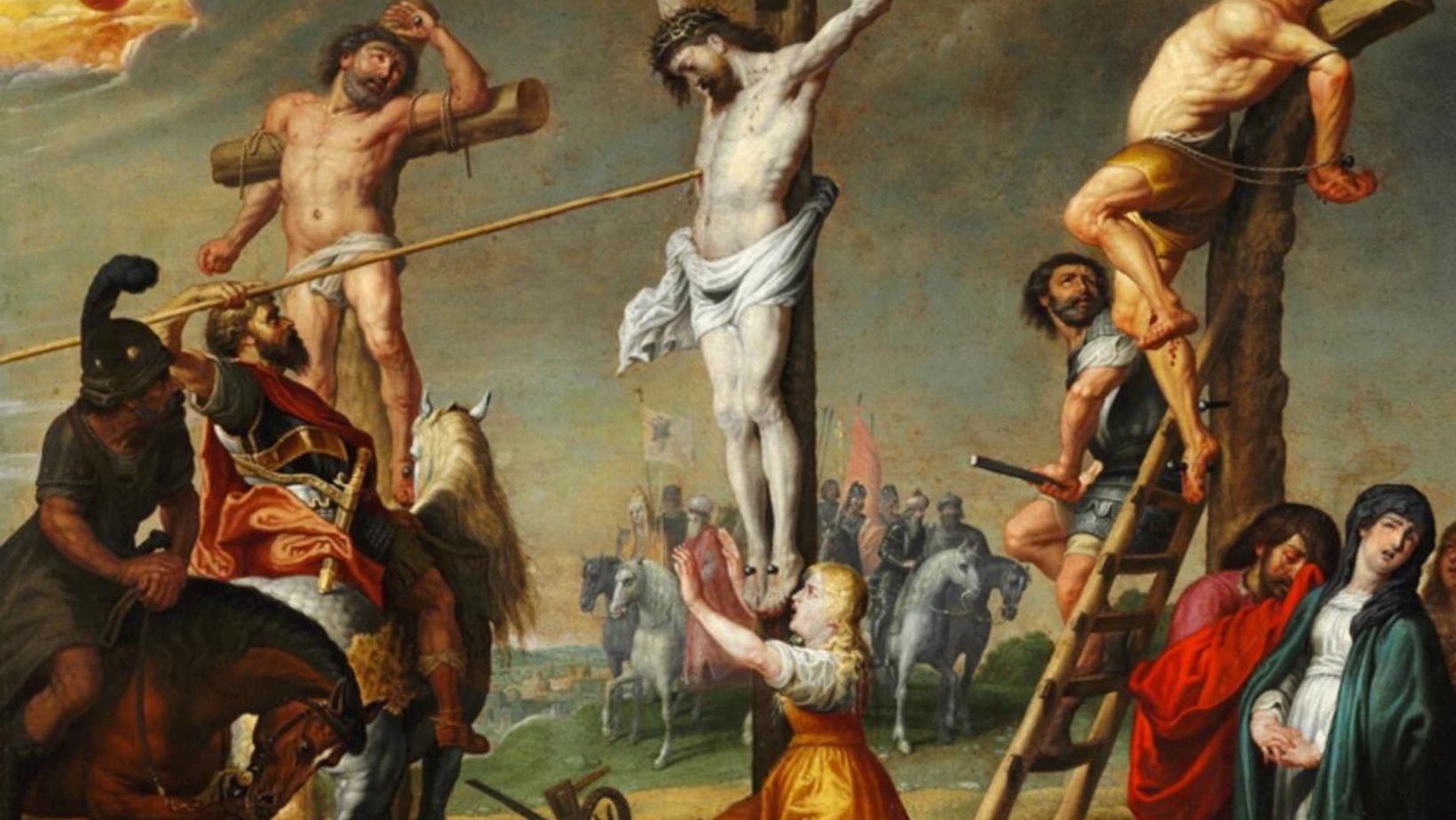The Spear of Longinus is no ordinary relic. Steeped in legend, it is said to have pierced the side of Jesus during the crucifixion, forever linking it to one of history’s most significant events. This artifact has captured imaginations for centuries, inspiring countless stories and beliefs. Historical artifacts like the Spear of Longinus are vital in shaping our cultural narratives. They serve as tangible connections to the past, bridging gaps between ancient events and modern understanding. Join us as we explore the fascinating history and cultural impact of the Spear of Longinus!
The Legend of the Spear

The Spear of Longinus has its roots in the New Testament. According to the Gospel of John, a Roman soldier named Longinus pierced Jesus’ side to ensure he was dead. This act is believed to have fulfilled a prophecy, as blood and water flowed from the wound.
Over time, the spear transformed into a powerful symbol within Christianity. It became associated with divine authority and the protection of the faithful. Legends also suggest that Longinus experienced a moment of enlightenment upon piercing Jesus, leading to his conversion to Christianity.
As the story spread, the spear acquired a mystical reputation. Many believed it held miraculous powers. Throughout history, various claims emerged about the spear’s whereabouts, with several relics being presented as the true Spear of Longinus. Each claim fueled fascination and debate, solidifying the spear’s place in both religious lore and historical curiosity.
Historical Accounts and Myths
Historical accounts of the Spear of Longinus are found in various ancient texts. The spear first appears in the Gospel of John, but references to it appear in apocryphal writings as well. These texts often attribute significant powers to the spear, claiming it could grant victory in battle or divine protection to its wielder.
Many myths surrounding the spear suggest that it possessed miraculous abilities. It was believed that whoever held the spear could not be defeated in combat. Some legends even claimed that it had healing properties, able to cure wounds and diseases.
Throughout history, the spear has been associated with several prominent figures. Some legends suggest it was wielded by Constantine the Great during his campaigns, further linking it to divine favor. In the Middle Ages, the spear became a coveted relic, sought after by kings and emperors for its supposed powers.
These myths and historical references have woven the Spear of Longinus into the fabric of various cultures, reflecting humanity’s fascination with artifacts that bridge the sacred and the historical.
The Spear in Religious Context

The Spear of Longinus holds significant importance in Christian symbolism. It is often associated with the crucifixion of Jesus Christ, representing both his suffering and the fulfillment of prophecy. The spear is seen as a tool that pierced Christ’s side, confirming his death and emphasizing the sacrificial nature of his crucifixion.
In religious art, the spear has inspired countless depictions. Artists often illustrate the moment of the crucifixion, with the spear-bearing soldier known as Longinus standing nearby. This has led to various representations in paintings, sculptures, and stained glass, each capturing the spear’s symbolic weight.
Literature has also embraced the spear’s religious significance. Various texts explore its mythos, portraying it as a relic of immense power. This symbolism extends beyond Christianity, influencing the depiction of spears and weapons in literature across cultures.
Overall, the Spear of Longinus remains a powerful symbol within Christian tradition. Its impact on religious art and literature illustrates the way artifacts can shape spiritual narratives and cultural identity.
The Spear in Medieval Europe
The Spear of Longinus became a significant symbol in medieval Europe, often associated with kings and emperors. Many rulers believed possessing the spear granted them divine right and military prowess. It was seen as a talisman of power, linking the ruler to the legendary figure of Longinus and the divine. This association elevated the spear’s status in political and religious contexts.
Several notable historical figures are linked to the spear throughout medieval history. For instance, Holy Roman Emperor Frederick I, also known as Barbarossa, claimed to possess the spear. He believed it conferred legitimacy to his rule and enhanced his military endeavors. Other figures, such as Charlemagne, also reportedly sought the spear, viewing it as a vital element in their quest for power.
The spear’s allure extended beyond mere legend. It was often included in royal regalia and ceremonial contexts. Kings would display it during important events to signify their authority. As a result, the Spear of Longinus became intertwined with the political narratives of medieval Europe, reinforcing the idea that artifacts can shape historical legacies.
Cultural Depictions in Literature and Art
The Spear of Longinus has been a powerful symbol in various literary and artistic works throughout history. Its representation often highlights themes of power, sacrifice, and redemption. In medieval texts, the spear is frequently portrayed as an artifact of divine significance, linking it to the crucifixion of Jesus Christ. This connection has inspired countless writers to explore its mythical qualities and historical importance.
In art, the spear has appeared in paintings, sculptures, and stained glass, capturing the imagination of artists across centuries. Renowned painters, like Peter Paul Rubens and Francisco Goya, have included the spear in their works, often depicting scenes of the Crucifixion. These artworks emphasize its role in Christian symbolism, reinforcing its impact on religious narratives.
Moreover, the spear’s presence extends to modern literature and pop culture. Contemporary authors often reference the spear as a metaphor for struggle and moral dilemmas. Its multifaceted representation demonstrates how artifacts can transcend time, influencing cultural narratives in various forms. Thus, the Spear of Longinus remains a potent symbol in both art and literature, reflecting society’s evolving values and beliefs.
The Spear in Popular Culture
The Spear of Longinus has made notable appearances in various forms of popular culture, including films, video games, and literature. In movies like “Indiana Jones and the Last Crusade” and “Constantine,” the spear is portrayed as a powerful artifact that holds significant historical and supernatural meaning. These representations often link the spear to themes of destiny, power, and the battle between good and evil.
In video games, the spear appears as a coveted item or weapon, often granting special abilities or status to players. Titles such as “Castlevania: Lords of Shadow” and “Darksiders” incorporate the spear into their storylines, enriching the narrative with its historical context. The weapon’s legendary status adds depth to gameplay, making it more appealing to players interested in mythology.
Furthermore, modern media often revisits the spear to explore contemporary issues, such as morality and the consequences of power. Its portrayal in popular culture reflects society’s ongoing fascination with historical artifacts and their meanings. Overall, the Spear of Longinus serves as a potent symbol in popular culture, bridging ancient history with modern storytelling.
The Spear’s Impact on National Identity

The Spear of Longinus has been embraced by various cultures as a symbol of heritage and national identity. Different nations claim the spear, asserting its connection to their history and religious beliefs. For instance, some cultures link it to divine protection or the power of their rulers. This claim often reinforces their national pride and cultural narratives.
The spear is also viewed as a powerful artifact representing authority and legitimacy. In medieval Europe, rulers and emperors used it to symbolize their divine right to govern. Possession of the spear was believed to bestow blessings and protection upon a nation, enhancing its significance in royal ceremonies.
In contemporary contexts, the spear is often invoked in discussions about national identity and cultural preservation. It serves as a reminder of a shared past and collective memory. By connecting with the spear, cultures emphasize their historical narratives and the importance of their heritage. Ultimately, the Spear of Longinus plays a crucial role in shaping national identity, reflecting the values and beliefs of the societies that claim it.
Modern-Day Locations and Relics
The Spear of Longinus, shrouded in mystery, has several claimed locations today. One of the most famous is the Hofburg Palace in Vienna, where a relic is believed to be the original spear. However, debates about the spear’s authenticity are ongoing. Scholars and historians often question whether these artifacts truly belong to the legendary spear.
Museums around the world display replicas and artworks inspired by the Spear of Longinus. These exhibitions highlight its historical and cultural significance. For instance, the Kunsthistorisches Museum in Vienna showcases artifacts related to the spear, offering insights into its storied past. Other institutions host temporary exhibits that explore the spear’s impact on art and literature.
Despite the uncertainty surrounding the spear’s authenticity, its presence continues to intrigue visitors. It remains a powerful symbol of faith, power, and history. The ongoing fascination with the Spear of Longinus illustrates its enduring legacy in modern culture. Whether as an authentic relic or a captivating story, the spear continues to spark curiosity and debate among scholars and the public alike.
Conclusion: Spear of Longinus
The Spear of Longinus holds immense cultural significance, intertwining history, religion, and mythology. Its connection to the crucifixion of Jesus Christ elevates it beyond a mere weapon, transforming it into a symbol of divine authority and power. This legendary artifact has inspired countless narratives in art, literature, and popular culture, shaping perceptions across generations. Ultimately, the Spear of Longinus exemplifies how historical artifacts can continue to resonate through time, serving as bridges between the past and present, while enriching our understanding of cultural identity and heritage.
FAQs
What is the Spear of Longinus?
The Spear of Longinus is a legendary weapon believed to have pierced the side of Jesus Christ during the crucifixion. It has become an important symbol in Christian theology and mythology, often associated with divine power and authority.
Are there multiple spears claimed to be the Spear of Longinus?
Yes, several artifacts throughout history have been claimed to be the Spear of Longinus. Various museums and churches in Europe, including the Hofburg in Vienna and St. Peter’s Basilica in Rome, display relics that are said to be the original spear, leading to debates over authenticity.
How has the Spear of Longinus influenced modern religious practices?
The spear has influenced modern religious practices by being referenced in liturgy and ceremonial art. It symbolizes the intersection of faith and historical events, prompting reflections on sacrifice and redemption during religious observances.
What role does the Spear of Longinus play in conspiracy theories?
The Spear has become a focal point for various conspiracy theories, often linked to themes of power and secrecy. Some narratives suggest that possession of the spear grants divine protection or political power, leading to its fictional portrayals in novels and films.
How has the Spear of Longinus appeared in popular media?
The Spear has been featured in numerous films, video games, and television shows, often depicted as a powerful artifact. These portrayals range from adventure narratives to fantasy epics, showcasing its influence on modern storytelling and cultural mythology.

